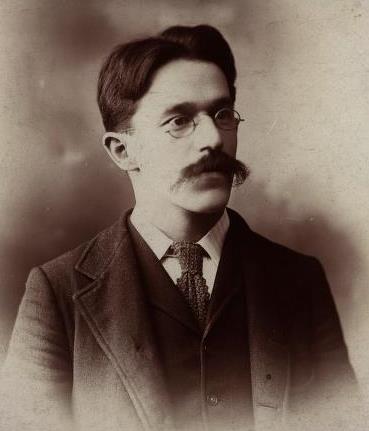Laura is a Ph.D. candidate in Cultural Studies at Trent University in Peterborough, Ontario. When I asked what brought her to the U-M Library, she replied, “The Labadie Collection, obviously!” and went on to describe her dissertation project studying the anarchist periodical press in the 1890s/1900s and the role these publications played in the anarchist movement as “sites of repression and resistance.” Given the roots and strengths of the Joseph A. Labadie Collection in that period, her assertion made good sense. Laura stayed here in Ann Arbor for nearly the whole summer, and for those three months was in our reading room almost as much as we were.
Her stint on campus – her first trip dedicated solely to academic research – gave her a few surprises. After spending so much time with the primary sources, she told me it seemed to emerge that “contributions to the [anarchist] movement that have been overlooked actually seem more central.” She was able to get an idea of what documentation of their own activities the anarchists at the turn of the 20th century thought was worth saving, and she gained a deeper sense of how the newspapers were a locus of organizing and debate. She also discovered resources that she otherwise would not have known existed if she hadn’t grown so familiar with online discovery tools for Labadie materials and had regular conversations with Julie Herrada, the curator for the Labadie Collection.

[Carl Nold was one of the individuals Laura was studying as a significant presence in the anarchist press. This image, along with many others, is available for download from the Labadie's Digital Photo Collection, here]
Not all of the surprises Laura encountered were so positive. A lot of the newspapers she needed turned out to be terribly fragile. For such materials that happen to also be available on microfilm, our standard protocol is to request that researchers use the latter. Laura spent a good deal of time consulting these reels in the Microforms and Serials room on the 2nd floor of Hatcher’s north building. “The amount on microfilm was more than I realized,” she said, “and how much is on film is good for preservation, but it’s not exactly the most accessible medium. It seems like it should be more replicable, but it’s just not user friendly.” I'm sure many can sympathize with this sentiment (I know I can). Thankfully, Laura was willing to sacrifice to keep the old newsprint around for future users (and possibly future digitization).
Another surprise was a bit more personal. Laura mentioned she was normally a real night owl, usually working into the morning hours. After three months of her quite disciplined Special Collections regimen, though, she said, “My body finally synchronized with the open hours of the reading room.”
We wish Laura all the best while she continues work on her dissertation, and hope she comes back to visit us again!